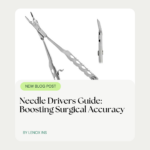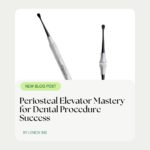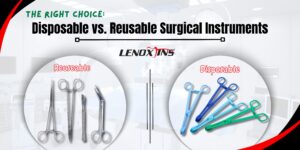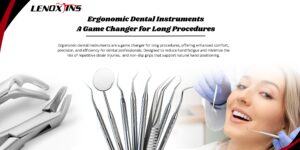Master Precise Suturing: Curved Needle Drivers Unveiled
- lenoxinstro
- November 14, 2024
- Dental Instruments, Dental Surgical, Needle Holder
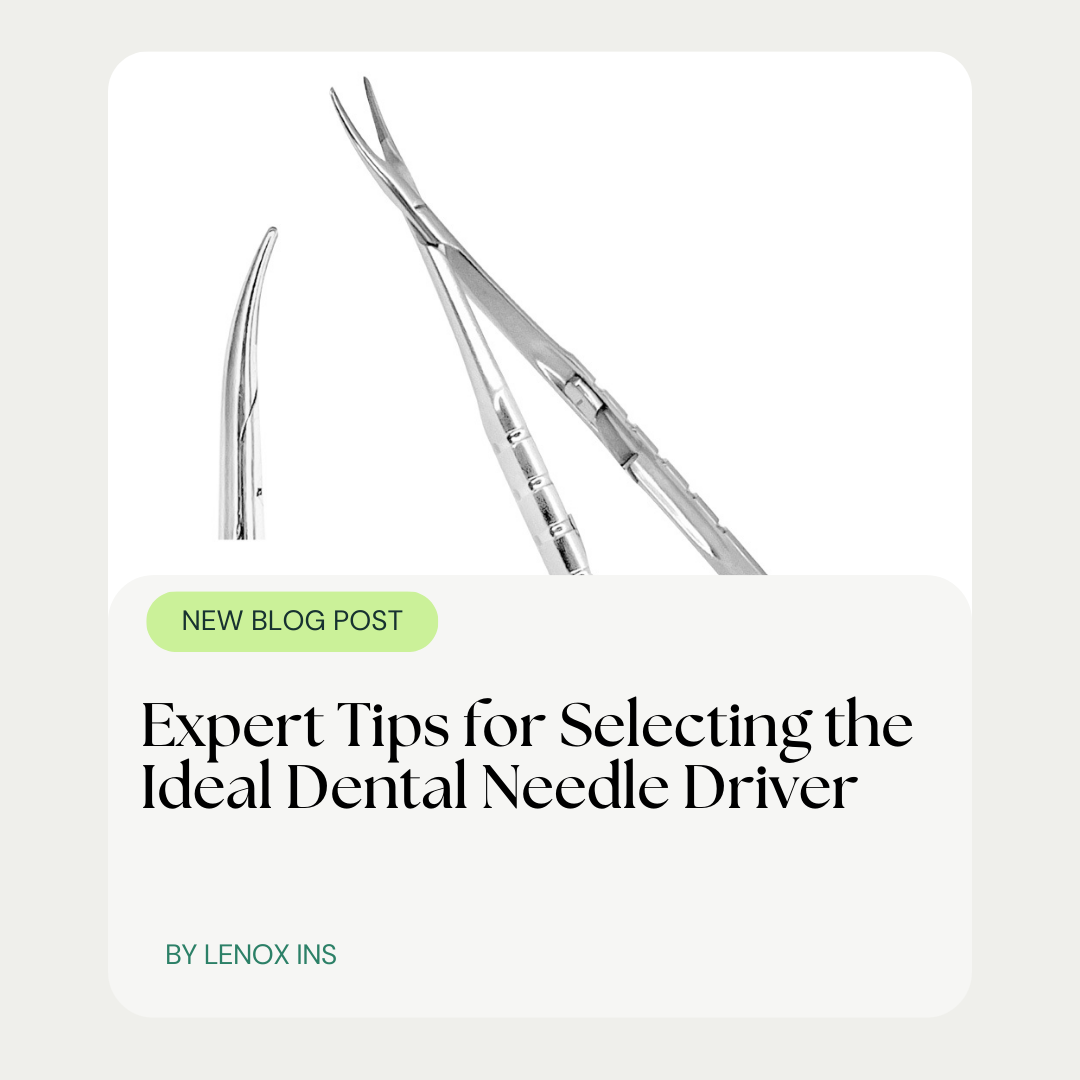
Curved needle drivers are essential tools in surgical suturing, often overlooked despite their significant advantages. These specialized instruments, available in various lengths and materials such as titanium, enhance suturing efficiency and precision. This article will explore the benefits of using curved needle drivers, improve wound closure techniques, and offer tips for selecting the right tool. By understanding these advantages, surgical professionals can better address common challenges, such as effective sterilization and the use of disinfectant methods, ultimately leading to more successful outcomes in patient care.
Key Takeaways
- Curved needle drivers enhance precision and control during suturing in complex surgical scenarios
- The ergonomic design reduces hand fatigue, improving comfort during lengthy procedures
- Tungsten carbide jaws provide superior grip, minimizing needle slippage and ensuring accurate placement
- Proper handling and maintenance extend the lifespan of curved needle drivers and improve performance
- Selecting the right curved needle driver is crucial for optimizing suturing techniques and outcomes
Understand the Advantages of Curved Needle Drivers in Suturing
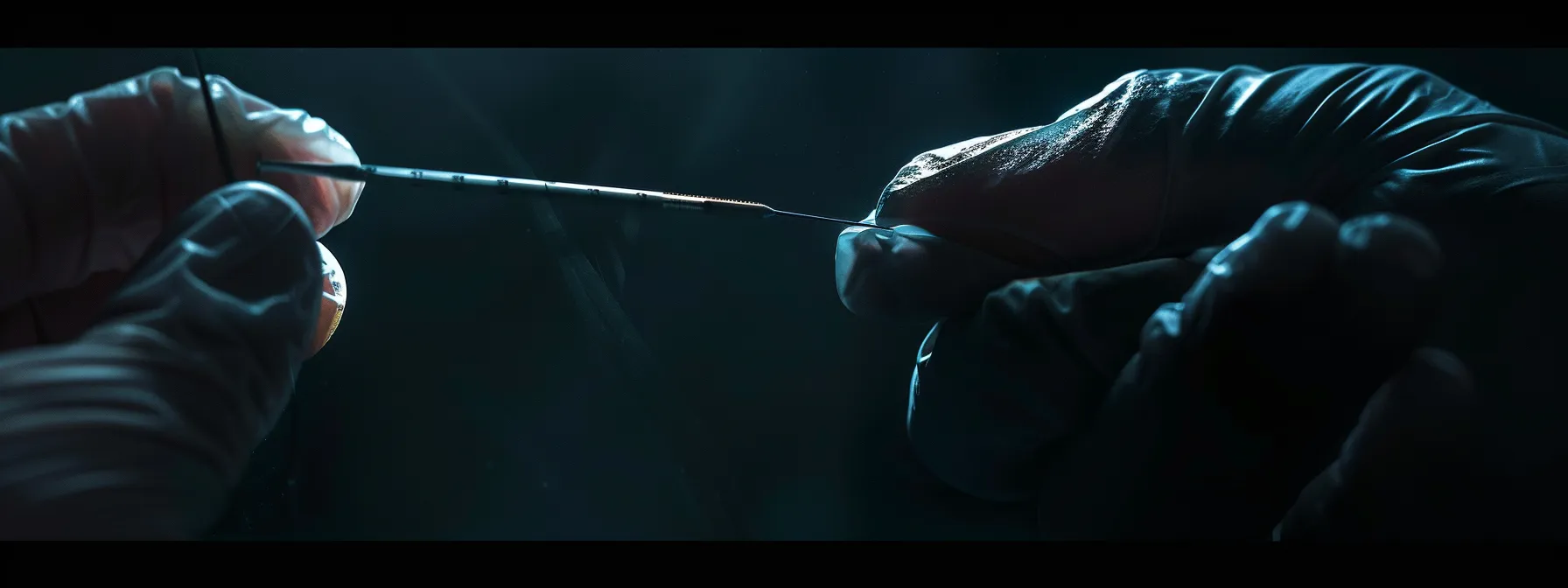
Curved needle drivers significantly enhance precision in suturing, allowing for better maneuverability in complex surgical scenarios. Their ergonomic design offers surgeons improved comfort and control while using needle holders and other tools, such as scissors and pliers, during procedures on bone and soft tissue. This section explores these advantages in detail, highlighting their practical implications for surgical success and efficiency.
Learn How Curved Needle Drivers Improve Precision in Suturing
Curved needle drivers improve precision in suturing by providing a more controlled approach when handling the needle. With features such as tungsten carbide jaws, these tools allow for a stronger grip, reducing the chances of the needle slipping during the suturing process. Additionally, using a Webster needle holder in conjunction with curved drivers enhances the ability to tie knots accurately, ensuring that the sutures are secure and reliable throughout the procedure.
| Feature | Description |
|---|---|
| Curved Design | Facilitates maneuverability around complex tissue structures. |
| Tungsten Carbide Jaws | Provide superior grip and needle stability. |
| Webster Needle Holder | Enhances precision in knot tying and control of the suture. |
| Ergonomic Grip | Reduces fatigue for surgeons during lengthy procedures. |
| Versatile Usage | Effective for both soft tissue and bone suturing tasks. |
Identify the Ergonomic Benefits for Surgeons Using Curved Instruments
Curved needle drivers offer significant ergonomic benefits for surgeons, particularly during extended procedures. The design of these surgical instruments reduces hand strain by allowing for a more natural wrist position, enhancing both comfort and stability while suturing. This improved grip translates to greater precision in technique, making it easier to manipulate needles and other tools, such as scalpels and dental instruments, without compromising control.
Curved needle drivers offer clear benefits in suturing, but there’s more to it. Mastering their use can significantly boost efficiency in any surgical procedure.
Improve Suturing Efficiency With Curved Needle Drivers
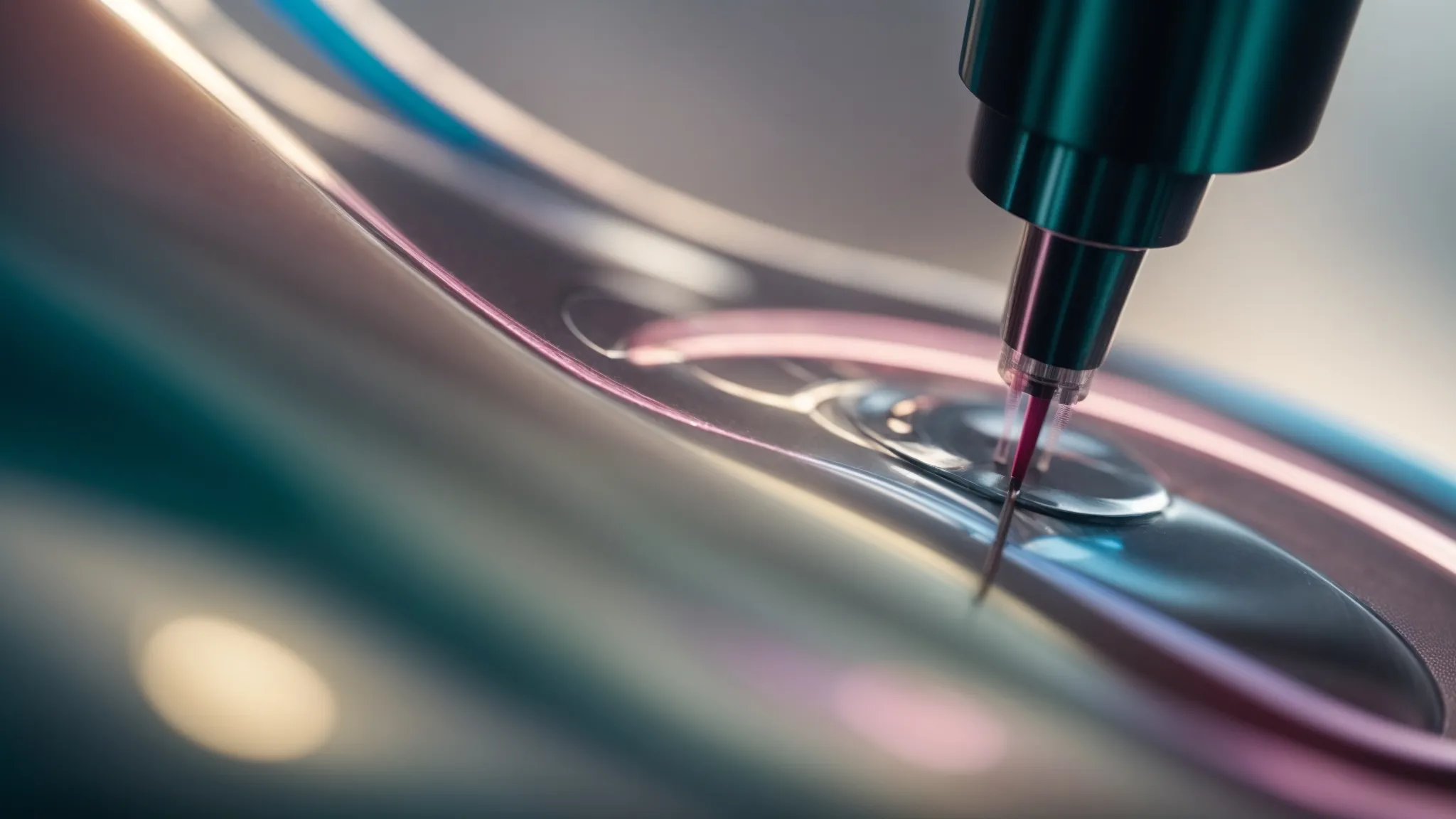
Curved needle drivers significantly improve suturing efficiency by reducing hand fatigue during prolonged surgical procedures and increasing speed and accuracy in needle placement. The ergonomic design and steel construction of these instruments provide better control, essential during delicate tasks such as eye surgery. This section will delve into how these enhancements contribute to effective wound management in the operating room.
Reduce Hand Fatigue During Long Surgical Procedures
Reducing hand fatigue during lengthy surgical procedures is a critical factor in maintaining efficiency and precision. Curved needle drivers, typically made of stainless steel, are designed to distribute pressure evenly across the hand, thus minimizing strain. In microsurgery, where delicate manipulation of surgical sutures is essential, these tools allow surgeons to use tweezers and other instruments with greater ease, enhancing overall control and focus throughout the procedure.
Increase Speed and Accuracy in Needle Placement
Curved needle drivers enhance the surgeon‘s ability to place sutures with increased speed and accuracy, especially in laparoscopic procedures. The tungsten jaws of these drivers provide a firm grip on the wire, minimizing the risk of slippage during delicate maneuvers. This reliability allows surgeons to maintain focus on the surgical site, whether they’re using a retractor or other instruments, resulting in more efficient wound closure and improved patient outcomes.
Mastering suturing with curved needle drivers is just the beginning. These tools hold the key to refining wound closure techniques, making each stitch count.
Improve Wound Closure Techniques Using Curved Needle Drivers
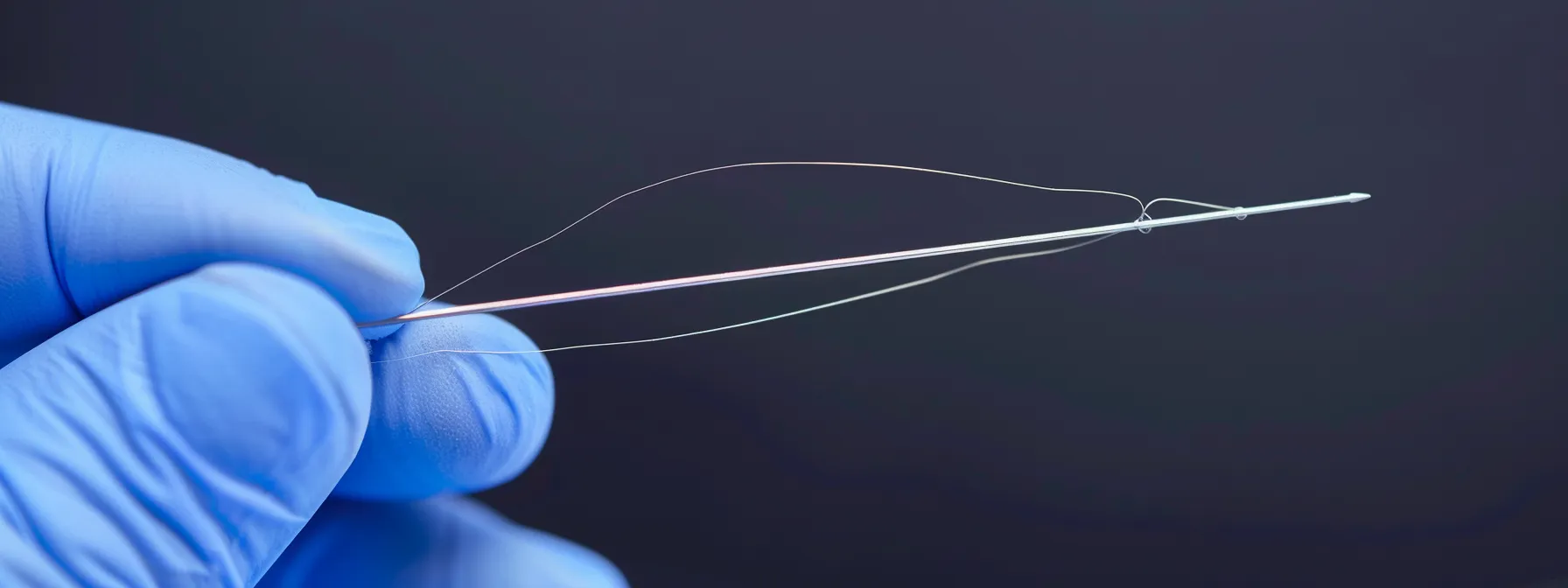
Curved needle drivers excel in improving wound closure techniques by achieving better tissue approximation and minimizing tissue trauma during suturing. These instruments, often used alongside hemostats and forceps, facilitate precise manipulation, enhancing the effectiveness of procedures in plastic surgery. The ergonomic design allows for a more natural finger position, leading to reduced strain and optimized outcomes during suturing tasks.
Achieve Better Tissue Approximation With Curved Drivers
Curved needle drivers enhance tissue approximation by allowing surgeons to maneuver the jaws precisely around complex anatomical structures. The integrated ratchet mechanism provides reliable grip and control during suturing, ensuring that needles are positioned accurately while minimizing tissue trauma. This capability is critical in achieving optimal wound closure, as it fosters the proper alignment of tissue layers, leading to enhanced healing and better patient outcomes.
Minimize Tissue Trauma During Suturing
Minimizing tissue trauma during suturing is crucial for achieving optimal healing and patient recovery. Curved needle drivers, with their design tailored for intricate maneuvers, allow surgeons to navigate around delicate organs and vessels with precision. By reducing unnecessary pressure on surrounding tissues, these instruments ensure that sutures are placed effectively while preserving tissue integrity, ultimately leading to better surgical outcomes.
| Benefit | Description |
|---|---|
| Precision Control | Curved design enhances the ability to position needles accurately. |
| Reduced Tissue Stress | Strategic manipulation minimizes the risk of damaging surrounding tissues. |
| Enhanced Healing | Better tissue alignment supports faster recovery and lowers complication rates. |
Choosing the right curved needle driver makes all the difference in surgery. It can enhance precision and efficiency, guiding the skilled hand toward the best outcomes.
Select the Right Curved Needle Driver for Your Surgical Needs
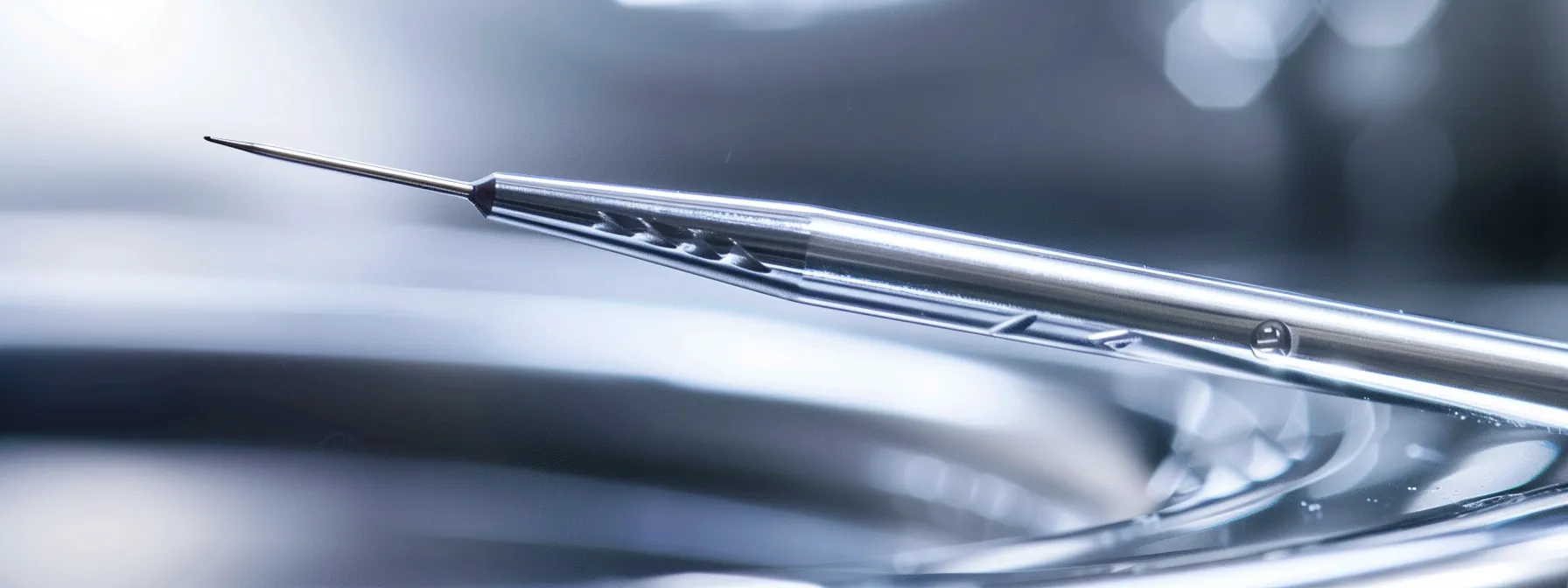
Selecting the right curved needle driver is essential for optimizing suturing techniques. Key features to consider include the material, curvature degree, and locking mechanisms that enhance control. Additionally, a comparison of different types of curved needle drivers can help surgeons choose the most suitable option for their specific needs, ensuring improved precision and efficiency in various surgical procedures.
Identify Key Features When Choosing a Curved Needle Driver
Choosing the right curved needle driver involves assessing several key features that can impact surgical outcomes. Surgeons should consider the material, such as stainless steel or titanium, for durability and corrosion resistance. The curvature of the needle driver plays a critical role in maneuverability, allowing the surgeon to reach difficult areas with ease, while locking mechanisms can provide added security during suturing tasks. Identifying these features ensures that the selected instrument aligns with the specific requirements of each surgical procedure, leading to enhanced precision and efficiency in suturing techniques.
Compare Different Types of Curved Needle Drivers
When comparing different types of curved needle drivers, it is important to consider their specific applications and features. For instance, some drivers may have a tighter curvature suitable for intricate procedures, while others offer a broader arc for general suturing tasks. Surgeons often benefit from selecting drivers based on the particular surgical scenario, which can enhance their efficiency and precision during suturing.
Having selected the right curved needle driver, the next step is to understand its use. Mastering the techniques with these tools can significantly enhance surgical precision and outcomes.
Master Techniques With Curved Needle Drivers in Surgery

Proper handling and manipulation of curved needle drivers is essential to maximize their benefits in suturing techniques. Surgeons must practice effective techniques to enhance precision and control when using these tools. Additionally, implementing advanced suturing methods with curved instruments can lead to improved outcomes in various surgical scenarios. Each aspect plays a critical role in optimizing the suturing process.
Practice Proper Handling and Manipulation of Curved Drivers
Practicing proper handling and manipulation of curved needle drivers is crucial for enhancing suturing techniques. Surgeons should focus on maintaining a firm yet gentle grip to ensure control while minimizing the potential for needle slippage during delicate procedures. Regular training on the nuances of curved driver usage can lead to improved precision and efficiency, ultimately resulting in better patient outcomes and a smoother surgical experience.
Implement Advanced Suturing Techniques With Curved Instruments
Implementing advanced suturing techniques with curved instruments can significantly enhance surgical outcomes. Surgeons can utilize these tools to achieve precise needle placement in tight spaces or complex tissue structures, leading to improved precision and efficiency. Techniques such as the continuous suture or the intradermal suture can be mastered with the aid of curved needle drivers, ensuring secure closures while minimizing tissue trauma. By refining their skills with these instruments, surgeons can ensure better alignment of tissue layers, which is crucial for optimal healing. Key aspects to focus on include:
- Mastering needle positioning for complex tissue.
- Adopting techniques that reduce tissue strain.
- Practicing various suturing methods to enhance versatility.
Using curved needle drivers is just the beginning. Proper care and maintenance can extend their life and enhance performance, ensuring they remain reliable tools in the surgical suite.
Best Practices to Maintain and Care for Your Curved Needle Drivers
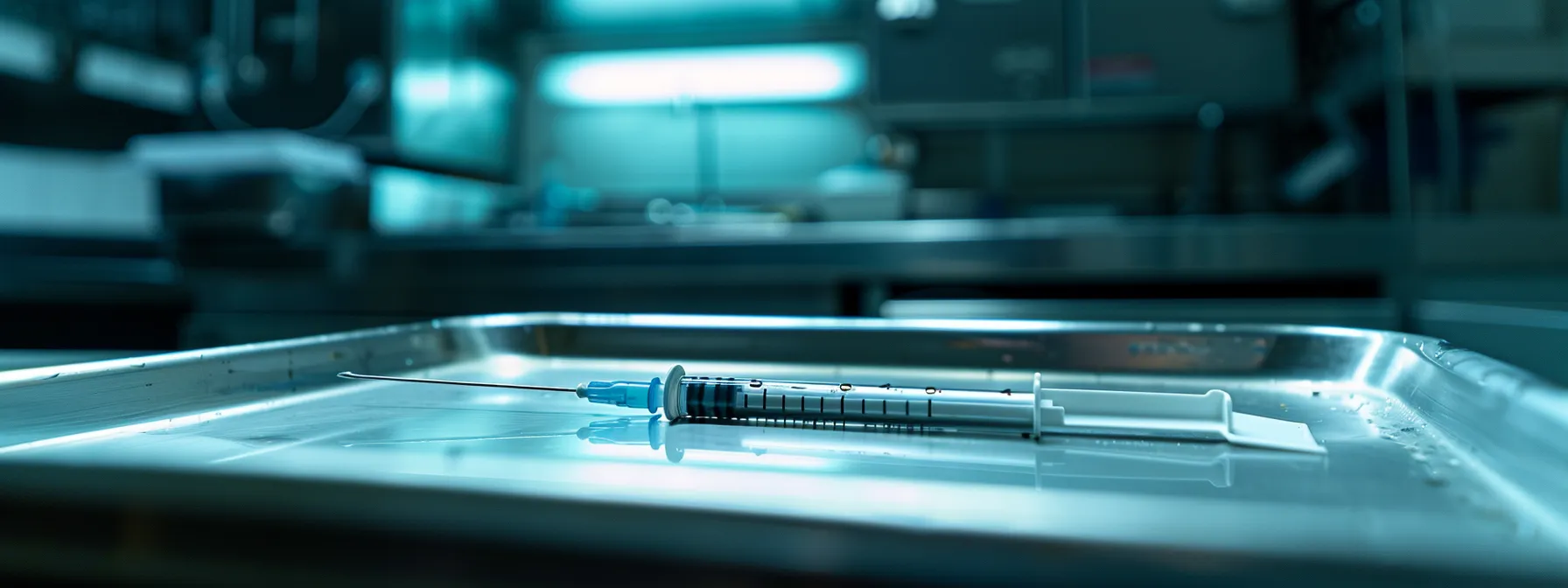
Proper maintenance and care for curved needle drivers are essential for optimal performance in suturing techniques. Effective cleaning and sterilization practices ensure these instruments remain safe for surgical use and prevent infection. Additionally, extending the lifespan of surgical instruments not only enhances efficiency but also improves overall procedural outcomes. This section will provide practical insights into both cleaning and longevity strategies for curved needle drivers.
Clean and Sterilize Curved Needle Drivers Effectively
To maintain the effectiveness and longevity of curved needle drivers, proper cleaning and sterilization protocols are essential. Following each surgical procedure, these instruments should be meticulously cleaned to remove blood and tissue debris using a soft brush and appropriate detergents, ensuring no residue remains. After cleaning, they must be sterilized according to established protocols, typically through autoclaving, to eliminate any potential pathogens, thus safeguarding patient safety and enhancing the overall reliability of suturing techniques.
Extend the Lifespan of Your Surgical Instruments
Extending the lifespan of curved needle drivers is essential for maintaining their effectiveness in suturing techniques. Proper handling, consistent cleaning, and routine inspections can help prevent wear and tear that might affect performance. Surgeons should be vigilant about looking for any signs of corrosion or damage, as these can compromise the reliability of the instruments during procedures:
- Handle with care to avoid bending or breaking.
- Regularly clean and sterilize after each use.
- Inspect instruments for wear and damage periodically.
- Store in a dry, safe environment to prevent corrosion.
- Follow manufacturer guidelines for maintenance and care.
Conclusion
Curved needle drivers play a crucial role in enhancing suturing techniques by providing improved precision, efficiency, and ergonomic benefits for surgeons. Their design allows for better maneuverability around complex anatomical structures, while features like tungsten carbide jaws ensure a secure grip on needles. By minimizing tissue trauma and reducing hand fatigue, these instruments contribute to better surgical outcomes and faster recovery for patients. Adopting the use of curved needle drivers is essential for any surgical practice aiming to optimize suturing effectiveness and patient care.

